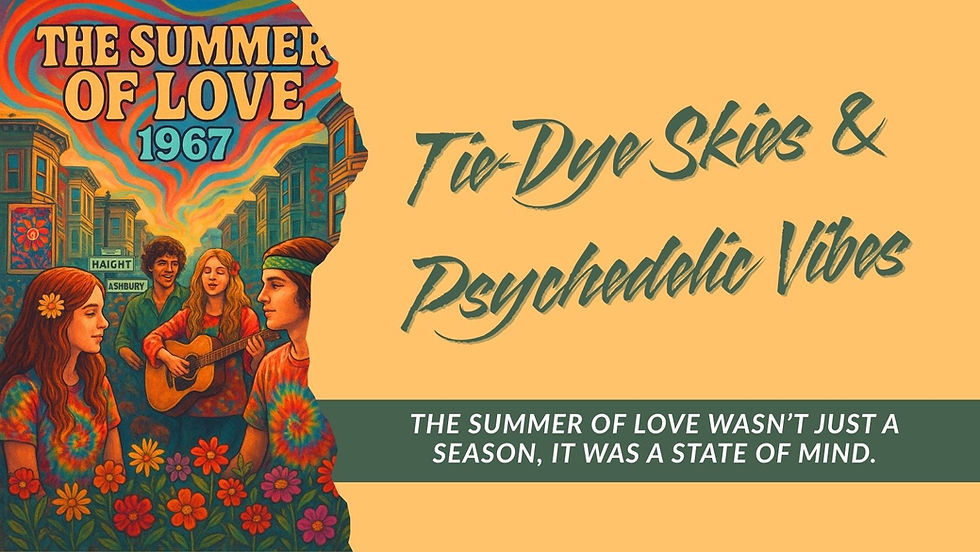The Legacy of Gershwin's Music
- Music Beat

- May 9, 2023
- 4 min read
In this article, we will explore how Gershwin's music shaped and reflected the cultural landscape of his time, and how it continues to inspire and delight audiences today.
George Gershwin was one of the most influential composers of the 20th century. His music spanned genres and mediums, from jazz and opera to film and theater.

George Gershwin was a musical genius who left an indelible mark on American culture. His songs and compositions have been featured in countless movies, TV shows, musicals, and concerts, and have influenced generations of artists and audiences. In this article, I will explore some of the ways that Gershwin's music has shaped and enriched our cultural landscape.
One of the most remarkable aspects of Gershwin's music is its versatility and adaptability. He was able to blend classical and jazz elements, creating a unique style that appealed to both highbrow and lowbrow tastes. He also wrote for a variety of genres and mediums, from opera and symphony to Broadway and Hollywood. His music can be heard in films ranging from comedy to drama, from romance to action, from animation to live-action.
Some of the Most Iconic Uses of His Music in Film include:
Rhapsody in Blue: This orchestral masterpiece was composed by Gershwin in 1924, inspired by the sounds and rhythms of New York City. It was used as the soundtrack for the 1945 biopic of Gershwin's life, starring Robert Alda as the composer. It was also featured in the 2000 animated film Fantasia 2000, accompanied by a colorful depiction of 1930s New York. Rhapsody in Blue 1945: Full Movie watch free.
An American in Paris: This musical film from 1951 starred Gene Kelly as an American painter who falls in love with a French girl, played by Leslie Caron. The film was based on Gershwin's 1928 orchestral composition of the same name, which evoked the sights and sounds of Paris. The film won six Academy Awards, including Best Picture, and featured a stunning 17-minute ballet sequence set to Gershwin's music. An American in Paris 1951 Musical: Full Movie watch free
Porgy and Bess: This opera from 1935 was based on a novel by DuBose Heyward, with lyrics by Ira Gershwin, George's brother and frequent collaborator. It tells the story of a disabled beggar named Porgy and his love for Bess, a drug-addicted woman who is abused by her lover. The opera features some of Gershwin's most famous songs, such as "Summertime", "I Got Plenty o' Nuttin'", "It Ain't Necessarily So", and "Bess, You Is My Woman Now". The opera was adapted into a film in 1959, starring Sidney Poitier as Porgy and Dorothy Dandridge as Bess. Porgy and Bess 1959 Musical: Full Movie watch free
Gershwin's music has also been used extensively in theater and popular culture. He wrote many songs for Broadway musicals, such as Lady Be Good, Funny Face, Girl Crazy, Of Thee I Sing, and Strike Up the Band. Some of his songs have become standards in the American songbook, such as "Someone to Watch Over Me", "Embraceable You", "They Can't Take That Away from Me", "I Got Rhythm", and "'S Wonderful". His music has been covered by countless artists from different genres and eras, such as Ella Fitzgerald, Frank Sinatra, Judy Garland, Louis Armstrong, Miles Davis, Willie Nelson, Amy Winehouse, and Lady Gaga.
USE MENU TO CHANGE TRACK
Gershwin's music is timeless and universal. It captures the essence of the American spirit: optimistic, adventurous, creative, and diverse. It speaks to our emotions: joy, sorrow, love, and longing. It celebrates our diversity: blending different styles, cultures, and influences. It inspires us to dream: of new places, new experiences, new possibilities. Gershwin's music is a legacy that we can all enjoy and appreciate.
Here are Some Little-Known Facts About Gershwin and His Music:
He was born as Jacob Gershowitz, but changed his name to George Gershwin when he became a professional musician.
He dropped out of school at age 15 to work as a pianist and songwriter for a music publisher in New York's Tin Pan Alley.
He composed his first opera, Blue Monday, in 1922, but it was a flop and only lasted one performance. He later revised it and renamed it 135th Street.
He collaborated with his brother Ira Gershwin, who wrote the lyrics for many of his songs, such as "I Got Rhythm", "Embraceable You", and "They Can't Take That Away from Me".
He died at age 38 from a brain tumor, which caused him to experience headaches, hallucinations, and loss of coordination. He was working on a musical called The Goldwyn Follies at the time of his death.
Related:
The Definitive Recording of the Great American Songbook: Fitzgerald Sings the George and Ira Gershwin Song Book: Full Album
Just some retired folk, filling our time, keeping our minds active with blogging. We are not selling anything. But a little recognition is nice. So, Join Us, and follow some of our Hobby Bloggers...
Featured at Retrotainment on Facebook
Related Digital Vinyl | BloggerNet Plus
There are some links to Amazon below, click on them or not, if you do thanks for your support. We don't really care; money is not our objective. But if you shop on Amazon, these links can save you money.



Comments